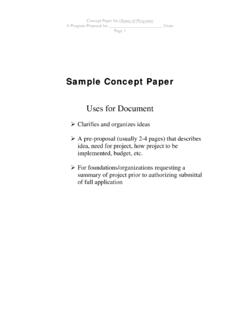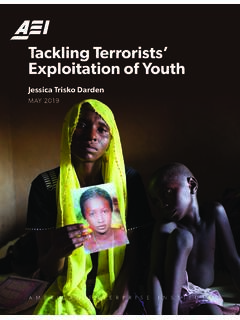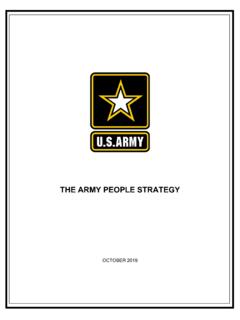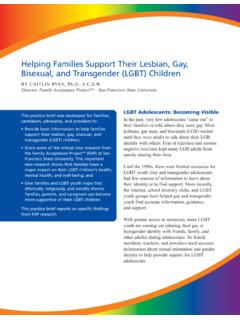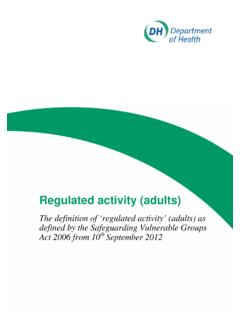Transcription of Participants in a Focus Group - SAGE Publications Inc
1 63 Participants in a Focus GroupWho should be invited to a Focus Group ? How many people should par-ticipate? How should Participants be identified? What does it take to get people to attend?Market research firms spend sizeable amounts of thought, time, and money refining their recruiting efforts. They know if they don t deliver enough of the right people for a Focus Group , their reputation in the business world suffers. They know the art of contrast, public sector organizations tend to underestimate the importance and difficulty of recruiting Participants . Public and nonprofit organizations operate within a different environment.
2 Most can t spend huge amounts of money on recruit-ing. They operate under different traditions, constraints, rules and Organizations Often Have Difficulty RecruitingNonprofit and public organizations that do their own Focus Group recruiting often have difficulty, because they assume Focus Group Participants are like volunteers. However, volunteers are typically more aware of and committed to the organization s mission than are others. Yet, these organizations often need to recruit people who aren t already committed to the issue and who have other interests and responsibilities competing for their time. Organizations underestimate how difficult it is to get Participants to agree to attend, and they overestimate the likelihood that those who agree to attend will actually show up at the appointed in public organizations may feel that their traditions and values require them to conduct meetings open to the public.
3 In some instances, decision makers may want to allow anyone and everyone to participate in a Group discus-sion. These sessions resemble public hearings, where citizens come to ventilate or to watch others as they share their enthusiasm or wrath. But Focus groups are not 4F O C U S G R O U P S64open public meetings, because this runs counter to critical characteristics that are essential for the Focus Group to work, such as having homogeneous Participants , a permissive environment and a limited number of illustrate the difficulties that can occur, consider the story of a suburban community. The city council wanted to build a new fire station.
4 The old station needed major improvements in communications, storage, heating and electrical. It would cost more to repair the old building than to build a new station. The city needed to pass a bond issue to build the new station a tough task. Twice before, the city council had placed the bond issue on the ballot, and twice the referendum was defeated. To avoid an embarrassing third defeat, the officials commissioned a research firm to study the possibility of a favorable vote. The research firm conducted Focus groups within the municipality. The public was invited to attend any or all of the discussions held in various places in the com-munity.
5 Announcements about upcoming Focus groups were made on cable TV; posters were placed in public buildings and on bulletin boards in grocery stores and pharmacies; and special ads were placed in newspapers. Naturally the attendance varied and the discussions were more like town meetings. The research firm s findings indicated that the vote would now be favorable, and the city council decided to move ahead with the election. The election results were a huge disappointment to the elected officials. The bonding bill was resound-ingly defeated. In hindsight, the city council discovered the opponents to the fire stations were largely senior citizens who were quite concerned about increased property taxes.
6 Seniors didn t attend the open meetings, but they did vote!Those who supported building a new fire station showed up at the Focus groups. Residents who were against the new station just ignored the meetings but showed up for the election. In this situation, the lack of careful procedures for selecting respondents produced embarrassing and erroneous results. Also, generalizations or projections to a population based on limited Focus Group inter-views are recruitment requires special efforts. When working with Focus groups, nonprofit and public organizations should forget their traditional means for recruiting and substitute instead a systematic and deliberate process.
7 Nonprofit employees regularly invite people to participate in meetings and events. These employees figure they can use these same techniques to get people to attend Focus groups. But conventional methods such as newsletters, form letter invita-tions or announcements at meetings just don t work well. If the organization is truly interested in getting quality information, then these methods should be set aside, because they will not be effective in getting the right number of the right people to Purpose Drives the StudyTo decide who should be invited to the Group interview, think back to the pur-pose of the study.
8 Usually the purpose is to describe how certain people feel or think about something people who have certain things in common. What kind Participants in a Focus Group65of people do you want to make statements about? What kind of people can give you the information you are looking for? The purpose should guide the invita-tion decision. The statement of purpose may require some additional refinement and clarification to ensure that the Participants have the degree of specification needed for the study. For example, the researcher might have initially identified community residents as the type of Participants to be invited, but later, after some thought, restricted Participants to unmarried residents between the ages of 18 and 40.
9 In other situations, Participants might be identified in broad terms, such as homemakers, teenagers or residents of a geographic purpose of the study is the first of three ingredients that influence the deci-sion of whom to invite. The second includes everything your team knows about the type of people you intend to recruit and groups that are close to them. Are the types of people you intend to recruit distinctive, identifiable and reasonable to locate? In Focus groups, the goal is to have a homogeneous audience. There are no precise rules that determine homogeneity, but rather it is a judgment call based on your available knowledge about the type of Participants and the , the budget influences the degree of specification.
10 Simply put, how many different groups can you afford to conduct? Or another way of asking the question is, How much are you willing to invest in this study? If resources are scarce and only three Focus groups can be conducted, you will need to decide what type of people will give you the most meaningful is needed when the Focus Group partici-pants represent diverse categories of people . It is a fal-lacy to assume that any one individual can represent his or her neighborhood, race, gender or culture. Each person speaks for himself or herself. When asked, how-ever, these individuals may attempt to offer insights about the opinions of an entire category of people .











